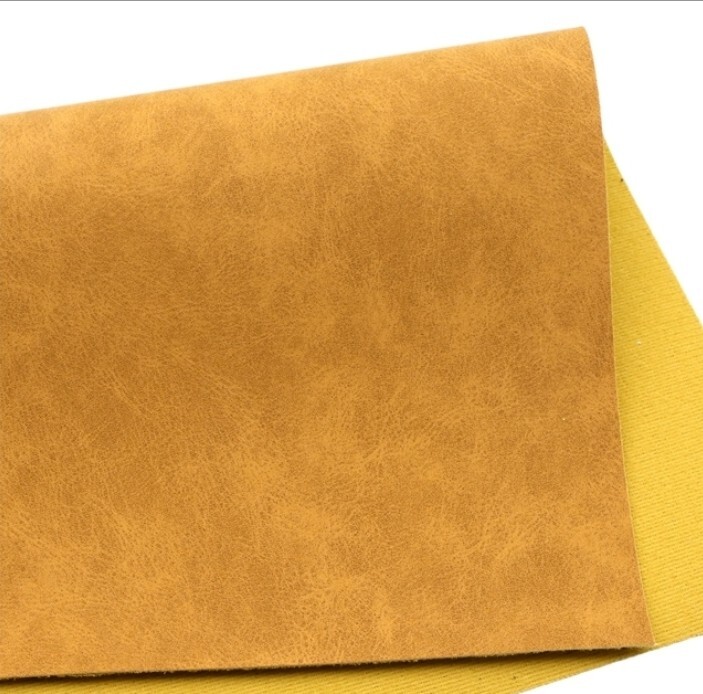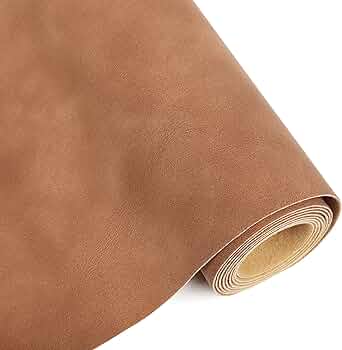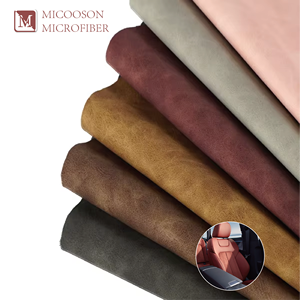Catalog
Material Insight: Vegan Suede

B2B Product Guide: Vegan Suede by WINIW
Vegan suede represents a sophisticated, high-performance alternative to traditional animal-derived suede, engineered specifically for demanding commercial applications across fashion, automotive interiors, furniture, and accessories. As sustainability and ethical sourcing become non-negotiable priorities in global supply chains, this advanced material delivers the coveted softness, drape, and aesthetic appeal of premium suede—without the environmental burden or ethical complexities of animal hide. WINIW’s vegan suede solutions are precision-formulated for consistency, durability, and seamless integration into industrial manufacturing processes, making them the strategic choice for forward-thinking brands committed to innovation and responsibility.
Why Faux Leather is the Superior Choice for Vegan Suede Applications
Faux leather—specifically engineered synthetic leather—outperforms other vegan alternatives in suede applications due to its unmatched technical and sustainability advantages:
– Consistent Quality & Performance: Eliminates the natural variations, defects, and limited availability inherent in animal hides, ensuring uniform color, texture, and thickness batch after batch for reliable large-scale production.
– Enhanced Durability: Resists staining, abrasion, and moisture far better than low-grade vegan textiles (e.g., microfiber alone), extending product lifecycles and reducing waste—critical for high-use sectors like automotive and contract furniture.
– True-to-Original Aesthetics: Advanced finishing technologies replicate the nuanced nap, depth, and tactile luxury of genuine suede, meeting luxury brand standards without compromise.
– Scalable Sustainability: Uses significantly less water and land than animal leather, avoids toxic tanning chemicals (e.g., chromium), and leverages recycled or plant-based polymers—aligning with circular economy goals.
– Supply Chain Resilience: Provides stable pricing and uninterrupted supply, free from livestock market volatility or geopolitical hide-trade constraints.
Introducing WINIW: Your Trusted Partner in Advanced Synthetic Leather
WINIW has pioneered high-performance synthetic leather solutions for over 20 years, serving global leaders in automotive, furniture, and premium fashion. We combine deep material science expertise with an uncompromising commitment to eco-innovation, operating state-of-the-art, ISO-certified facilities that prioritize closed-loop water systems and non-toxic, water-based coatings. Our vegan suede collections are rigorously tested for wear resistance, colorfastness, and environmental safety (OEKO-TEX® STANDARD 100 certified), ensuring they exceed industry benchmarks while reducing carbon and water footprints. Partner with WINIW to transform your sustainability vision into tangible, market-leading products—backed by two decades of engineering excellence and responsive B2B collaboration.
Technical Performance & Standards

WINIW Vegan Suede – B2B Product Technical Guide
WINIW’s vegan suede is an innovative synthetic leather engineered for performance, sustainability, and industrial versatility. Designed specifically for B2B clients across fashion, footwear, automotive, and upholstery sectors, this material delivers premium aesthetics without compromising on durability or environmental responsibility. Combining advanced microfiber technology with eco-conscious manufacturing, WINIW vegan suede offers a cost-effective and compliant alternative to traditional leather and lower-grade synthetics.
Technical Advantages
-
Cost-effective
WINIW’s production efficiency and optimized raw material sourcing reduce overall cost per meter without sacrificing quality. The material’s high yield and low waste during cutting and processing further enhance cost savings for manufacturers. -
Durable & High-Performance
Constructed with high-density polyurethane (PU) and ultra-fine microfibers, WINIW vegan suede exhibits excellent abrasion resistance, tensile strength, and dimensional stability. It maintains integrity under repeated flexing and stress, making it ideal for high-use applications. -
Customizable Colors
The material supports broad color gamut customization with batch-to-batch consistency. Clients can specify PANTONE® or custom shades, with options for matte, soft-touch, or textured finishes. Color fastness meets or exceeds industrial standards (ISO 105-B02). -
REACH Compliance
WINIW vegan suede is fully compliant with EU REACH regulations (EC 1907/2006), ensuring the absence of SVHCs (Substances of Very High Concern) and restricted hazardous substances. This supports safer supply chains and market access in Europe and beyond. -
ISO 9001-Certified Production
Manufactured in ISO 9001-certified facilities, every batch undergoes stringent quality control. This guarantees consistent thickness, color, and physical properties, minimizing production variability for clients.
Product Specifications
| Spezifikation | Value / Detail |
|---|---|
| Base Material | Ultra-fine polyester microfiber + PU coating |
| Thickness Range | 0.6 mm – 1.2 mm (customizable) |
| Weight | 180 – 250 g/m² |
| Abrasion Resistance | >20,000 cycles (Martindale, 500g load) |
| Color Fastness (Light) | Grade 6–7 (ISO 105-B02) |
| Color Fastness (Rubbing) | Dry: Grade 4–5; Wet: Grade 4 (ISO 105-X12) |
| Tensile Strength | ≥ 80 N/5cm (warp and weft) |
| Tear Strength | ≥ 15 N |
| Environmental Compliance | REACH SVHC-free, RoHS compliant |
| Zertifizierungen | ISO 9001, OEKO-TEX® STANDARD 100 (on request) |
| Customization Options | Color, thickness, backing, texture, roll width |
| Standard Roll Width | 1.37 m or 1.52 m |
| Minimum Order Quantity | 1,000 meters (color and spec dependent) |
WINIW vegan suede is engineered to meet the evolving demands of sustainable and scalable manufacturing. With a focus on performance, compliance, and customization, it provides B2B partners with a reliable, future-ready material solution.
Why Choose Synthetic over Real Leather

B2B Product Guide: Vegan Suede vs. Real Leather for Commercial Applications
As a leader in sustainable synthetic materials, WINIW provides objective insights to help businesses make informed sourcing decisions. Understanding the core differences between vegan suede (high-performance synthetic alternatives) and real leather is critical for aligning product specifications with sustainability goals, cost structures, and performance requirements.
Core Material Definitions
- Vegan Suede: A synthetic textile, typically crafted from premium microfiber PU (polyurethane) or plant-based polymers. Engineered to replicate the soft, napped texture of suede without animal-derived content. WINIW’s formulations prioritize recycled content (e.g., PET bottles) and water-based, low-VOC production.
- Real Leather: A natural material derived from tanned animal hides (primarily bovine). Requires extensive chemical processing (tanning, dyeing) to achieve durability and color stability. Genuine suede refers specifically to the napped underside of split hides.
Comparative Analysis: Key Business Metrics
The table below evaluates critical factors for commercial procurement, based on industry lifecycle assessments and WINIW’s material testing protocols.
| Metric | Vegan Suede (WINIW Microfiber PU) | Real Leather (Full-Grain) | Key Considerations for B2B Buyers |
|---|---|---|---|
| Cost | Moderate to High (consistent) | High (volatile) | Vegan suede offers stable pricing with no hide-grade fluctuations. Real leather costs surge with hide scarcity (e.g., droughts, disease) and complex tanning requirements. |
| Dauerhaftigkeit | High abrasion resistance; uniform structure | Variable (grade-dependent); ages with character | Vegan suede resists stains, moisture, and UV fading better. Real leather develops patina but is prone to water damage, scratches, and requires conditioning. Ideal for high-traffic commercial use (e.g., hospitality furniture). |
| Eco-Friendliness | ★★★★☆ (High) | ★★☆☆☆ (Moderate) | Vegan suede uses 90% less water, zero animal farming impact, and WINIW’s closed-loop production minimizes chemical runoff. Real leather involves high water/chemical use in tanning (Cr-VI risks) and methane from livestock. Biodegradability favors real leather only if untreated. |
Strategic Advantages for Commercial Buyers
- Supply Chain Resilience: Vegan suede eliminates hide procurement volatility and ethical compliance risks (e.g., deforestation linked to cattle ranching). WINIW guarantees traceable, consistent rolls with no batch variation.
- Regulatory Alignment: Meets EU REACH, California Prop 65, and global PFAS-free standards out-of-the-box. Avoids increasing restrictions on chrome-tanned leather (e.g., EU Ecolabel criteria).
- Design Flexibility: Custom color, thickness, and performance additives (e.g., fire retardancy, antimicrobial) integrated during production—no post-tanning limitations.
- Kohlenstoff-Fußabdruck: WINIW’s vegan suede generates up to 60% lower CO2e per m² vs. bovine leather (per Higg MSI data), supporting ESG reporting and net-zero commitments.
WINIW’s vegan suede represents a technologically advanced, ethically sound alternative engineered for commercial longevity and environmental stewardship. We partner with brands to deliver performance parity with real leather while future-proofing supply chains against ecological and regulatory shifts. Request our full LCAs and sample swatches to validate suitability for your application.
WINIW Factory Capabilities

WINIW is a leading manufacturer of high-performance synthetic leather, specializing in innovative, eco-friendly materials for global B2B markets. With a strong foundation in research, production excellence, and sustainable practices, WINIW serves industries ranging from automotive and furniture to fashion and technical textiles.
The company operates from a state-of-the-art manufacturing facility spanning 100,000 square meters, one of the largest in the synthetic leather industry. This extensive production capacity enables WINIW to meet large-volume orders with consistent quality and on-time delivery, supporting partners across diverse supply chains.
Key strengths of WINIW’s factory include:
- A dedicated R&D team of over 100 technical experts focused on material innovation, durability enhancement, and environmental sustainability.
- In-house development of raw formulations, coating technologies, and surface finishing techniques, allowing for rapid customization and fast time-to-market.
- Strict quality control (QC) protocols implemented at every stage of production, from raw material inspection to final product testing, ensuring compliance with international standards.
- Advanced testing laboratories equipped to evaluate physical properties, color fastness, abrasion resistance, and eco-compliance (including REACH, RoHS, and OEKO-TEX®).
WINIW’s products are exported globally, with a strong presence in environmentally conscious markets such as Europe and the USA. The company maintains long-term partnerships with leading brands committed to sustainable and ethical material sourcing.
- All production processes align with ISO 9001 (Quality Management) and ISO 14001 (Environmental Management) standards.
- Full traceability and documentation support for global regulatory requirements.
- Continuous investment in low-impact manufacturing technologies, including water-based and solvent-free production lines.
With integrated capabilities in innovation, scale, and quality, WINIW delivers reliable, high-value synthetic leather solutions tailored to the evolving demands of international B2B clients.
Contact Us for Samples
WINIW Vegan Suede: Premium Sustainable Microfiber Leather for Discerning Brands
WINIW delivers high-performance vegan suede engineered for brands committed to sustainability without compromising on luxury, durability, or design flexibility. Our proprietary microfiber technology replicates the soft hand-feel and refined aesthetic of genuine suede while eliminating animal-derived materials and reducing environmental impact. Ideal for fashion, automotive, and furniture applications, WINIW Vegan Suede supports your ESG goals with verified eco-credentials and scalable B2B solutions.
Why WINIW Vegan Suede Stands Out
- True Sustainability: Composed of 40% recycled polyester and 60% plant-based PU, certified by Global Recycled Standard (GRS) and OEKO-TEX® STANDARD 100. Zero PVC, phthalates, or heavy metals.
- Performance-Driven: Engineered for resilience with 50,000+ double rubs (Martindale test), water resistance (AATCC 22), and colorfastness (ISO 105-B02). Maintains integrity in high-use applications.
- Design Versatility: Available in 1.0–1.8mm thicknesses, 1,300+ colors, and customizable textures (suede, nubuck, embossed). Compatible with laser cutting, digital printing, and ultrasonic welding.
- Supply Chain Reliability: ISO 9001-certified production with 30-day lead times for bulk orders (MOQ: 500m). Full traceability from raw materials to finished roll.
Technical Specifications at a Glance
| Property | WINIW Vegan Suede Standard | Industry Average | Test Standard |
|---|---|---|---|
| Thickness | 1.2mm ±0.1 | 1.4mm–1.6mm | ISO 2589 |
| Weight (g/m²) | 380–420 | 450–500 | ISO 9073-3 |
| Tensile Strength | ≥25 N/mm² | ≥18 N/mm² | ISO 1767 |
| Elongation at Break | ≤25% | ≤35% | ISO 1767 |
| Martindale Abrasion | 50,000+ cycles | 30,000 cycles | ISO 12947-2 |
| Recycelter Inhalt | 40% | <10% | GRS v4.0 |
Your Competitive Edge with WINIW
- End-to-End Collaboration: Co-develop custom formulations (e.g., enhanced UV resistance for automotive, antimicrobial finishes for upholstery).
- Circularity Support: Take-back program for pre-consumer waste; material designed for recyclability in closed-loop systems.
- Compliance Ready: Meets EU REACH, California Proposition 65, and LEED v4.1 material disclosure requirements.
Elevate Your Product Line Sustainably
WINIW Vegan Suede empowers brands to meet rising consumer demand for ethical luxury while exceeding performance benchmarks. Reduce your carbon footprint by 30% compared to conventional leather alternatives without sacrificing quality or design freedom.
Request Free Samples & Technical Dossiers
Evaluate WINIW Vegan Suede for your next collection or product line. Contact our B2B team for material swatches, compliance documentation, and volume pricing:
MKT88@MicrofiberLeather.com
Free physical samples available for qualified brands within 5 business days.
💰 Leather Cost Savings Calculator
See how much you save by switching to WINIW Microfiber Leather.






